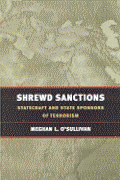The Ninth Circuit’s ruling to uphold a temporary restraining order on President Trump’s much-protested immigration order has been widely hailed by advocates. Yet it did not address what is arguably the most sweeping component of the order: a steep, across-the-board cut in the number of refugee admissions the United States will allow next year. Under the measure, that number would be slashed by more than half, from 110,000 to 50,000.
The ruling was silent on another critical component of the order as well: a provision that would give state and local governments greater involvement in the process of resettling refugees in their jurisdictions. At best, that would politicize what has already been a contentious project. At worst, advocates fear, it could be used by governors to veto refugee arrivals.
Existing federal law requires coordination between the nine private, voluntary agencies that handle resettlement logistics and state and local officials. Until now, those officials have not had the power to reject refugee admissions.
That could change.
In 2015, in the wake of the terrorist attacks Paris, 31 governors (all but one of them Republican) said that Syrian refugees were not welcome to resettle in their states, and then-Governor of Indiana Mike Pence attempted to halt the distribution of federal funds for that purpose. A federal district court prevented him from doing so in a ruling that the Seventh Circuit Court of Appeals upheld unanimously.
But that ruling was based, at least in part, on the notion that authority to regulate immigration, including by refugees, lies with the president. Under the new plan, governors would not have to act against the executive in order to put the brakes on refugee admissions. And they are explicitly given new leverage with which to do so.
If empowered, governors could resist accepting refugees into their jurisdictions. That could hobble the nation’s resettlement program.
That would send a powerful signal: to our allies in Europe, who let in more than a million migrants in 2015 and now face resurgent anti-immigrant populism; to anti-immigrant populists who argue that refugee admissions are detrimental to national security (evidence shows they are not); to Syria’s neighbors, who struggle to cope with the spillover effects of the violence there; and to extremists, who aim to paint the United States as bigoted and unwelcoming.
If the president can defuse the crisis over the Kremlin connection, the new administration may roll out a new, narrower measure in the days to come. President Trump pledged as much during a recent press conference. If that happens, odds are that evidently discriminatory provisions—those that appear to preference particular religions, for example—will be scaled back. But broader cuts to the refugee program will not be. That is a problem, as they could do just as much harm.
On that count, the courts are unlikely to be a source of relief. For those, myself included, who do not want to see the refugee program unravel, Congress may be a better place to turn.
The Brookings Institution is committed to quality, independence, and impact.
We are supported by a diverse array of funders. In line with our values and policies, each Brookings publication represents the sole views of its author(s).












Commentary
What the Ninth Circuit ruling doesn’t do
February 20, 2017